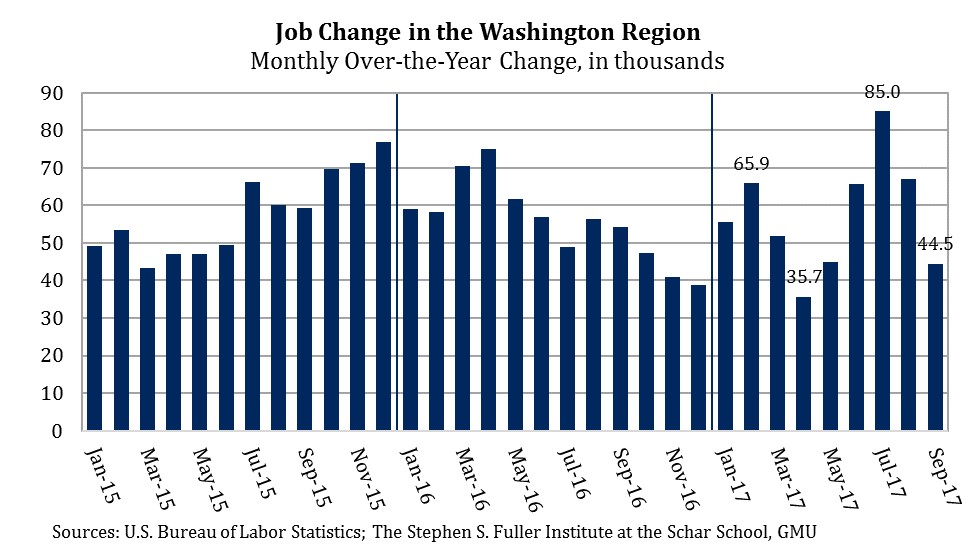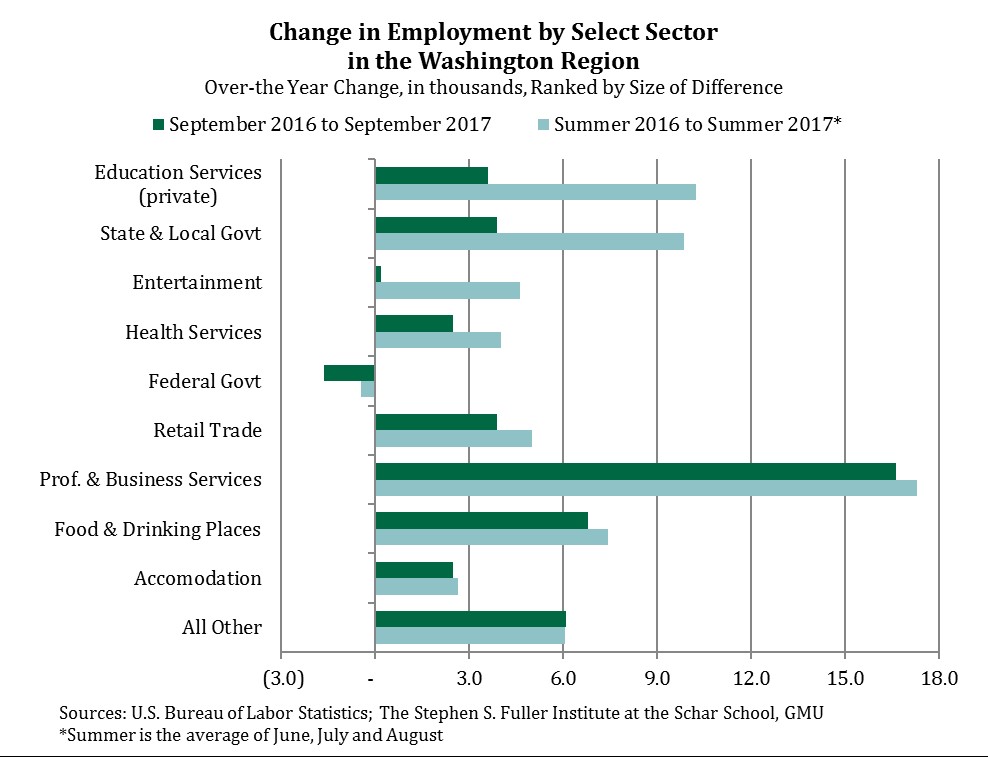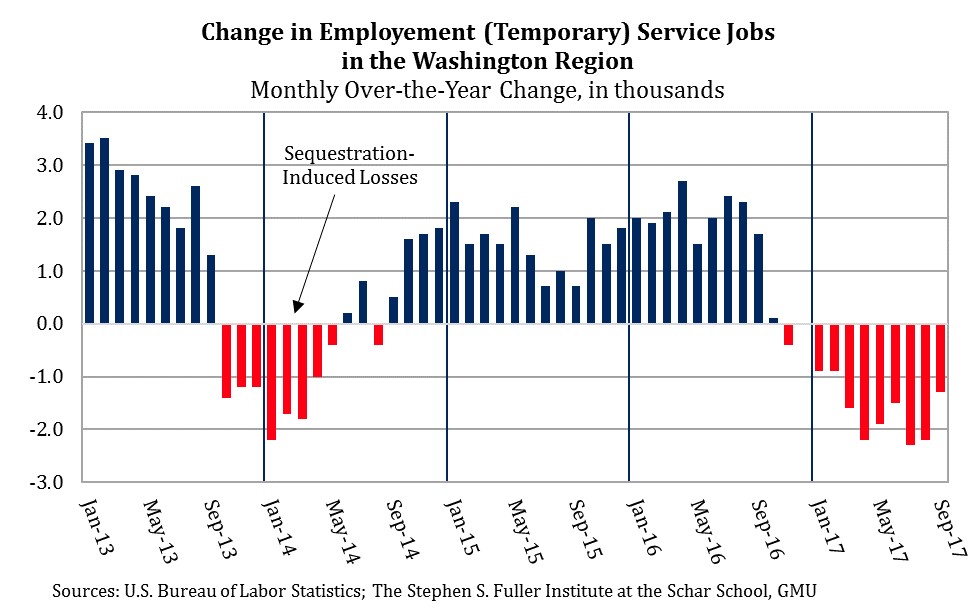
Between September 2016 and September 2017, the Washington region added 44,500 jobs, marking the second slowdown in job growth so far in 2017. Monthly over-the-year job gains tend to follow a similar trajectory throughout the year. In 2015, monthly over-the-year gains accelerated before slowing in 2016. Gains in 2017 have not followed a consistent pattern. Some of this volatility may be “revised away” with the March 2018 revisions. However, new seasonal trends and the uncertainty of the Trump Administration may be playing a role in the inconsistent employment gains in our region. Despite this uncertainty, sustained decreases in the Employment (temporary) Service jobs indicate that businesses are hiring permanent employees at greater rates, possibly as a result of a tightening labor force.
Job growth in the region started off strong in 2017, increasing by 55,600 jobs between January 2016 and January 2017. Gains in February accelerated, rising to 65,900. During the spring months, this trend reversed slowing to a gain of 35,700 jobs in April. The increase in April was the smallest since 2014.
The start of summer marked yet another shift in the job growth trend. Monthly over-the-year gains accelerated between April and July. In July, gains reached a peak at 85,000, the largest increase for the region since 2004. In August, job growth slowed to 67,100. This drawdown continued in September and the region added 44,500 jobs compared to the same month in 2016.
Shifts in Patterns of Job Growth: Summer 2017 and September 2017
The slowdown job growth in September compared to the summer months was not uniform across the sectors and three sectors (or sub-sectors) accounted for three-quarters of the decline: Education Services (private sector), State & Local Government, and Entertainment. This may suggest that the summer employment boost partially reflects new seasonal trends.
The Education Services sub-sector, in the Education & Health Services sector, includes private employment only. During summer 2017, this sub-sector gained an average of 10,230 jobs compared to summer 2016. In September 2017, the 12-month gain was just 3,600, a difference of -6,200 (-64.8%). The elevated increase during the summer months may reflect either more children in private sector schools (day care) or more adults in continuing education programs.

State & Local Government employment increased by an average of 9,870 jobs between the summer of 2016 and the summer of 2017. In September 2017, this sector increased by just 3,900, a decrease of 5,970 jobs or 60.5 percent compared to its summer gain. The largest monthly over-the-year increase occurred in July 2017 (+17,300), but there are indications that this increase will be revised down significantly in March 2018. Two of sub-state areas, D.C. and Northern Virginia, had fewer State & Local government jobs in July 2017 compared to 2016 and the increase in Suburban Maryland was modest (+7,600). A large discrepancy between the sum of the sub-state areas and the regional total, which are all estimated separately, typically portends a revision in the region-wide estimate. Of all the sectors, State & Local Government seems the most likely to be revised and may not reflect a new summer trend.
Lastly, the Entertainment sub-sector of Leisure & Hospitality had unusually large gains during the summer of 2017, rising by an average of 4,630 jobs. In September 2017, Entertainment jobs increased by 200, -4,430 (-95.7%) compared to the summer increase. The higher-than-average increase in this sub-sector may reflect more entertainment options and form the basis of a new seasonal pattern going forward.
Employment (Temporary) Service Jobs
Another trend to emerge in 2017 has been the decline in the Employment Service sub-sector of Professional & Business Services, which consists of temporary/staffing services. This sub-sector has had consecutive monthly over-the-year declines throughout 2017, the longest trend since the Recession. Prolonged job losses in this sub-sector can indicate either that businesses are hiring permanent employees at a higher rate or that businesses are preparing for a contraction. During the Sequester, this sub-sector decreased for the four months prior to overall jobs declines and largely coincided with the overall slowdown in growth. Because overall job gains have been relatively strong, it seems more likely that the decline in temporary employees is the result of a tightening labor force.

About These Data
All data in this post are from the October 20, 2017 release of the Current Employment Statistics from the U.S. Bureau of Labor Statistics, not seasonally adjusted.
